Browse Primary Sources
Locate primary sources, including images, objects, media, and texts. Annotations by scholars contextualize sources.
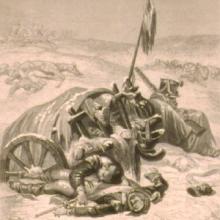
Retreat from Russia
There was not much to celebrate in the Russian campaign, especially once the retreat from Moscow began. Print depicting the horrific conditions and loses suffered by the French army as it retreated from Moscow in the winter of 1812.
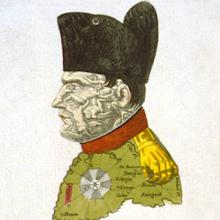
Triumph of the Year 1813
Napoleon’s efforts to dominate central Europe kindled a huge reaction, as national feelings soared among the many ethnic groups inhabiting the area. While these feelings would eventually lead to great internal conflicts, at first they were focused on francophobia and hostility to Napoleon.

Napoleon Is Unable to Digest Leipzig
After the defeat in Russia, with renewed allied forces arrayed against him, Napoleon prepared once again to defend France. Yet in 1813 at Leipzig, the Emperor was defeated. This allowed the allies to press a successful campaign, leading to the surrender in 1814. Napoleon would return the next year, only to be defeated at Waterloo and exiled far from Europe.

I Am Called Cerberus but Am Also a Chameleon: Napoleon Being Sucked into Hell
Where once cartoonists focused on classical images of death to signal the doom of monarchs and aristocrats, they now used these same symbols to drag Napoleon into the netherworld.
This source is a part of the The Napoleonic Experience teaching module.
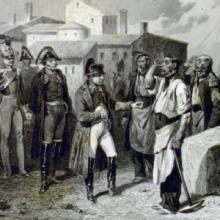
The Emperor and the Imperial Guard on the Island of Elba
Napoleon spent ten months on this island in the Mediterranean. He was able to follow events in France without much difficulty. This initial exile was part of a relatively lenient settlement granted by the allies in 1814 after Napoleon’s initial defeat. France’s opponents did not want to humble the nation so much that it would seek revenge.
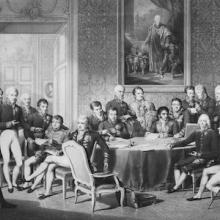
Congress of Vienna
The treaty in the spring of 1814 had accepted Napoleon’s surrender, but a general meeting of European countries convened to settle broader issues of a postrevolutionary era. While the allies were working on a number of concerns—and as a byproduct, raising French anxieties—Napoleon returned to capitalize on this negative reaction.
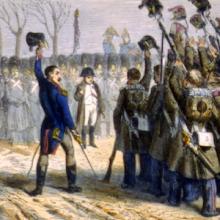
Return from the Island of Elba
Troops sent by Louis XVIII to stop Napoleon’s advance toward Paris either deserted or joined Napoleon.
This source is a part of the The Napoleonic Experience teaching module.
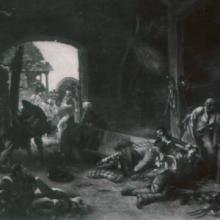
The Day after Waterloo
Thousands died or were wounded in the fighting that began 15 June and ended at a series of farmhouses at Waterloo on 18 June 1815.
This source is a part of the The Napoleonic Experience teaching module.
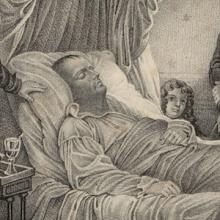
The Death of Napoleon on St. Helena
Even in death Napoleon was controversial. Many questions surrounded his death: Was he poisoned? His hair had high levels of arsenic in it. Did he have stomach cancer? He certainly had stomach ulcers and suffered from severe intestinal pain and frequent vomiting.
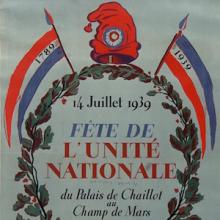
Festival of National Unity, 14 July 1939
In this celebration of national unity, the focus on 1789 is quite apparent. The Phrygian cap at the top of the decorations recalled the Revolution, as did the date for this celebration. Of course, both symbol and date had been used and appropriated repeatedly since 1789, but this is a clear reference to the 1789 event.
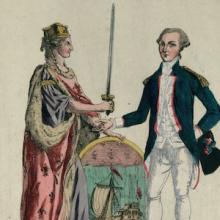
Lafayette Receives the City’s 'Sword for the Defense of Liberty'
During the Revolution the most visible connection between America and France was Lafayette, who had volunteered for service in the American Revolution and had been mentored by Washington and Jefferson. This special status vaulted him to prominence in 1789 as he became a delegate in the Estates–General, head of the National Guard, and a general in the military.
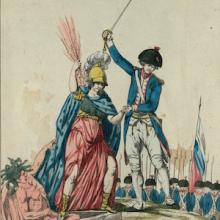
The French Nation Defeats Despotism
Here Lafayette’s role is praised. A warlike liberty stands with him over a defeated despotism at his feet. Revolutionaries often represented despotism as a multi-headed monster.
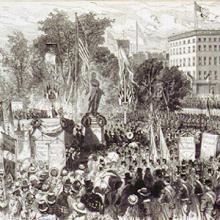
Solemn Inauguration of the Statue of Liberty
Toned down and transformed from her revolutionary past, the Statue stands for liberty, even without a pike and a Phrygian cap. Furthermore, the Statue, a gift from France and a marvel of engineering, still connotes revolution because of the identification between France and revolutionary notions.
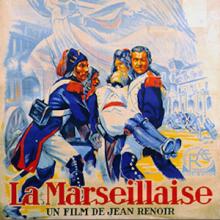
The Marseillaise
A similar emphasis on patriotic unity can be seen in Jean Renoir’s film, La Marseillaise (1938). The movie tells the story of France’s national anthem, composed by Rouget de Lisle as a way to rally the troops. The song, written for soldiers from Marseillaise, soon inspired the entire nation.
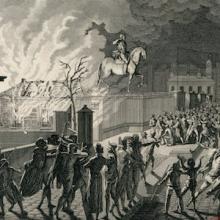
Burning the Guardhouse on the Pont Neuf
This retrospective shows that early in the French Revolution targets were often economic. This should be no surprise as the populace had a long tradition of taking the law into its own hands to rectify what they saw as injustices. Here a guardhouse is destroyed during a riot focused on a network of facilities regulating the market.
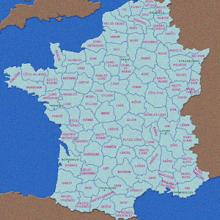
Departments of 1798
Map of 1798 France depicting the Departments and major urban centers.
This source is a part of the The Napoleonic Experience teaching module.
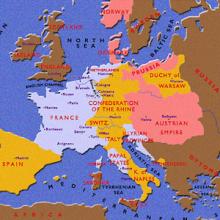
Map of Europe in 1812
A map of Europe in 1812 depicting French territory, French dependencies, and territories allied to Napoleonic France.
This source is a part of the The Napoleonic Experience teaching module.
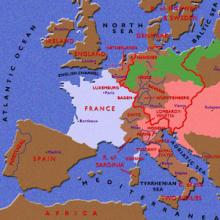
Map of Europe in 1815
A map of Europe in 1815 depicting Napoleonic France, Prussia, the Austrian Empire, and the boundary of the Germanic Confederation.
This source is a part of the The Napoleonic Experience teaching module.
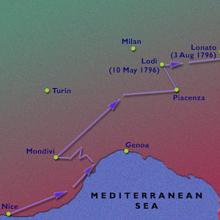
Napoleon in Italy 1796-97
Map depicting Napoleon's campaigns in Italy, 1796-97.
This source is a part of the The Napoleonic Experience teaching module.

Napoleon’s Egyptian Campaign
Map depicting Napoleon's Egyptian campaigns.
This source is a part of the The Napoleonic Experience teaching module.